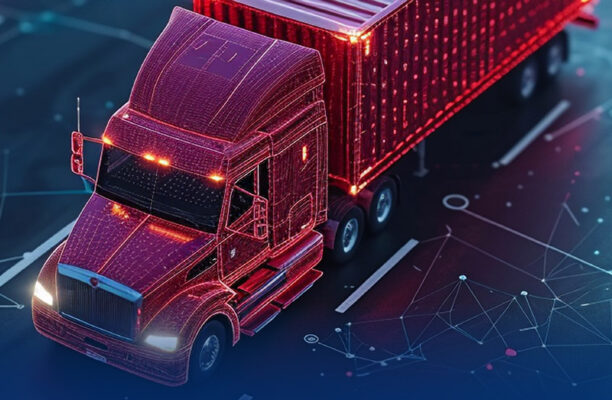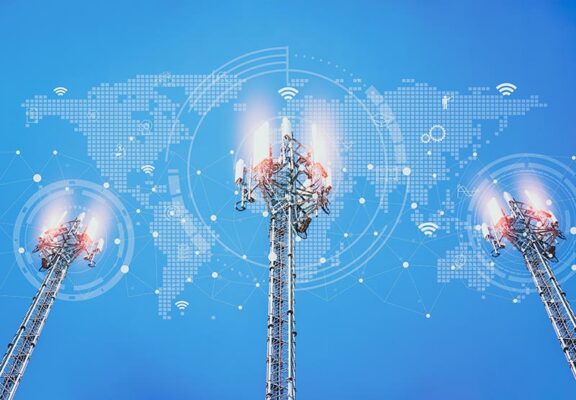Introduction
Sales of electric vehicles (EVs) are skyrocketing globally. The EV market is projected to reach 39.2 million units by 2030, up from an estimated 8.2 million units in 2022, at a compound annual growth rate of 21.7%.
Supporting EV uptake acceleration requires rapid public EV charging expansion worldwide — primarily with DC fast chargers (aka superchargers). Original equipment manufacturers (OEMs) and charge point operators (CPOs) have an exceptional business opportunity to fill that need.
to Market Fast
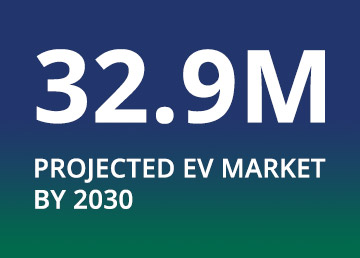
EV solution providers often focus only on selecting the EV charging hardware that best fits their situation. However, it’s also critical to consider the software and connectivity for networked or cloud-based communications. Cellular IoT connectivity is the most ubiquitous and reliable choice for public EV chargers and can adapt to future needs.
This playbook will discuss six must-haves for OEMs making EV chargers and CPOs buying and operating stations. It will also explain the role of cellular IoT connectivity and software in ensuring that charging hardware provides:
- Secure and dependable experiences for EV drivers
- Easy operation and management for owners
Table of Contents
- Introduction
- OEMs Support EV Adoption with Mission-Critical Charging Equipment
- 1. Create Reliable infrastructure
- 2. Optimize Security to Safeguard the EV Cyberattack Surface
- 3. Approach Hardware and Connectivity Requirements Holistically
- 4. Provide Complete Coverage to Help Consumers Find Charging Stations
- 5. Offer Connectivity That Enhances Brand Reputation and Revenue
- 6. Calculate the Cost of Ownership over the Equipment’s Lifetime — Not Just the Sticker Price
- Select an IoT Vendor with a Global EV Charging Hardware and Connectivity Offering
- About Us
- Key Takeaways
OEMs Support EV Adoption with Mission-Critical Charging Equipment
EV charging stations must meet the demands of operators and consumers to:
- Operate safely
- Function nonstop
- Thwart hackers
- Leverage suppliers with extensive electrical grid and IoT connectivity experience
OEMs and CPOs must keep in mind six priorities to satisfy these needs.
1. Create Reliable infrastructure
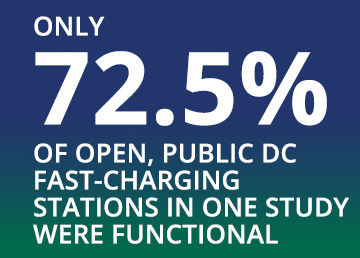
Paradigm-changing technologies such as EVs can suffer severe setbacks if customers struggle with poor experiences. An EV driver watching their range plummet needs to know that the nearest charger is available — and that it will work. This assurance is especially critical if the charger is 100 miles down the road and the next one is completely out of range. For EVs to be a true alternative to gas-powered cars, charger reliability is as essential for OEMs as network coverage is for CPOs.
Unfortunately, that’s not always the case. A University of California Berkeley study of 181 open, public DC fast-charging stations found that only 72.5% were functional.
OEMs and CPOs must adopt a mindset that every EV charger component is mission-critical.
“You have a customer expectation of 100%, and the industry reality is closer to 70% for many networks. What reduces frequency of outages is solid hardware design and proactive maintenance. What reduces the duration of an outage is strong service-level agreements with the station manufacturer and your service electricians to include requiring local inventory of repair parts.”
Karl Popham, Manager of Electric Vehicles and Emerging Technologies, Austin Energy
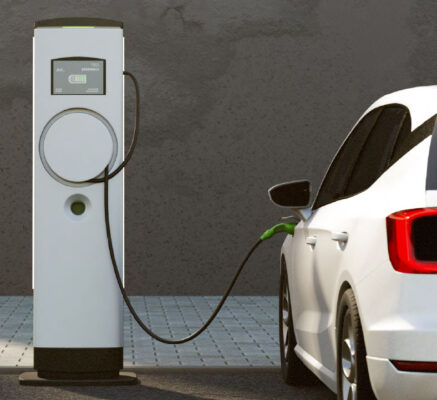
OEMs should consider industrial-grade hardware components, which can sustain temperatures from -40° Celsius to 85° Celsius. They can handle humidity, vibration and mechanical shock. Chargers must also be rugged enough to withstand severed cables and disabled poles, charging errors and cable faults.
OEMs and CPOs must also consider the rise in setting standards for EV charging. The California Air Resources Board adopted the Electric Vehicle Supply Equipment (EVSE) Standards for accessibility. These requirements are comprehensive, from ensuring EV drivers can use any charging station regardless of network membership to posting fees for charging. OEMs and CPOs must ensure they build and manage charging stations in compliance with these standards
2. Optimize Security to Safeguard the EV Cyberattack Surface
More smart EV charging stations and management systems have been connecting to the internet, giving hackers an expanding target. EV equipment “black hat” hackers have outnumbered “white hat” professionals who test security systems and help manufacturers find and fix weaknesses.
“We’re talking about IoT-enabled products that have hardware, software and networks and connect to the grid. So, security must be a complete umbrella that goes from end to end.”
Sushant Patney, Senior System Architect, Smart Grid
In addition, cellular networks may be powered by 5G cloud-native technology. Certain network parts may run on servers in rogue countries that don’t abide by international rules criminalizing cyber actors. State-of-the-art encryption protocols for communications to and from the EV charger are vital, especially for payment processing.
“We are talking about very sensitive data. Customer must feel confident there’s no risk making payments through EV charging stations.”
Marco Stracuzzi, Head of Product Marketing, Telit Cinterion
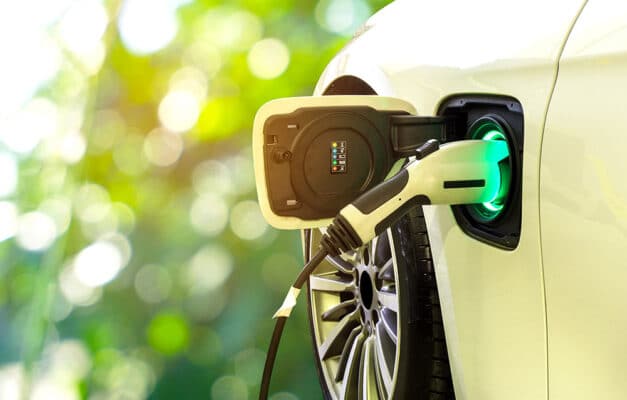
OEMs must equip EV charging devices and management systems with enterprise-grade security. These measures include secure connections and communication protocols between chargers and vehicles.
Trusted device identity ensures IoT modules provide functionalities that let devices be authenticated and authorized on the internet. SIM cards are also evolving to become more secure, first to chips soldered to the electronic board of the communication unit and soon to software running on a module’s secure hardware area.
3. Approach Hardware and Connectivity Requirements Holistically
Integrating IoT is complex. When building a product, it’s crucial to consider hardware and connectivity requirements together.
“Customers don’t want to troubleshoot and call multiple phone numbers. You want a one-stop shop and one phone number to call to solve issues in the field.”
Sushant Patney, Senior System Architect, Smart Grid
OEMs should also consider bundling connectivity services with cellular modules for enhanced capabilities and faster time to market. Modules certified to regulatory, industry and carrier standards give OEMs an advantage by greatly reducing the time and money to certify the end device.
Stracuzzi sees a great advantage for CPOs who get their hardware and connectivity plans from a single vendor. CPOs need to monitor, manage and optimize energy consumption. Moreover, they must understand consumers’ behavior and create exceptional experiences. These things require real-time data access.
“It eliminates the long and painful back and forth between different suppliers once you have an issue in the field. It will be easier to troubleshoot and identify what the problem is. Practically, it’s something very important.”
Marco Stracuzzi, Head of Product Marketing, Telit Cinterion
4. Provide Complete Coverage to Help Consumers Find Charging Stations

Coverage must be comprehensive at every point and work across spectrums and with different companies. However, wired networks aren’t always available at many locations that require EV chargers.
Even where fixed-line connections are available, a wireless backup helps ensure that charge points are always connected. Cellular technology is typically available where EV charge points are installed — whether that’s a hospital, school or parking lot.
Cellular networks use licensed spectrum, which makes them highly reliable. Still, CPOs that sign a deal with a specific operator are limited to the reach of its network. Virtual network operators offer a choice and deliver high levels of resilience and dependability.
“A virtual network operator with partnership agreements can select the best network from several based on different KPIs, like technology or signal quality.”
Marco Stracuzzi, Head of Product Marketing, Telit Cinterion
5. Offer Connectivity That Enhances Brand Reputation and Revenue
Network availability and a stable, always-on internet connection are required for IoT devices to function. Outages or poor cellular connectivity can cost CPOs revenue and brand reputation.
There’s No Such Thing as Good-Enough Uptime
Charging stations that aren’t connected produce no income for charging networks. The tab for one year of connectivity issues can run as much as $10 million.
| Charger Uptime | Charger Downtime |
|---|---|
| 95% | Two weeks per year |
| 99% | Four days per year |
In addition, the customer experience must be intuitive and seamless.
“Access for payment processing must be fast because no one has the patience to wait more than a few seconds for transaction approval.”
Marco Stracuzzi, Head of Product Marketing, Telit Cinterion
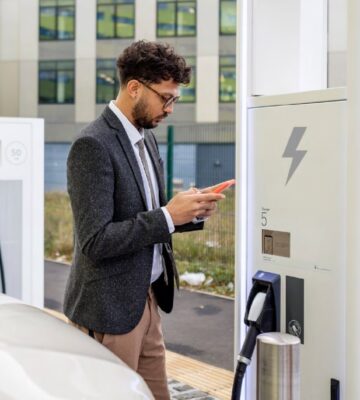
Excellent customer experience depends on low-latency technology behind the scenes. However, network congestion can also frustrate users. Virtual private networks that give CPOs a preferred channel into the network can prevent downtime. In some remote locations without solid LTE or 5G coverage, CPOs may need to be able to switch quickly to legacy technologies.
Fragmented global cellular network ecosystems challenge reliable, resilient IoT connectivity for charging stations. In Europe, where travel often crosses borders, drivers need the flexibility to use the same EV charging account in multiple countries. CPOs must be able to integrate the same network from anywhere, regardless of the cellular operator.
That’s possible if the mobile virtual network operator (MVNO) selected operates a network with redundant core servers in different locations. A good MVNO should also rely on distributed, virtually uninterruptible systems (e.g., Amazon Web Services Cloud) to improve robustness against a physical fault.
6. Calculate the Cost of Ownership over the Equipment’s Lifetime — Not Just the Sticker Price
Buyers need to make valid comparisons when evaluating costs from different vendors.
“Instead of just focusing on initial cost, you might want to make a longer-term cost of ownership comparison over a period of years.”
Sushant Patney, Senior System Architect, Smart Grid

For instance, investing more in hardware components may mean spending less on other solution elements (e.g., a remote management tool) that prove mandatory for reliability and security.
With some suppliers, it’s also possible to bundle hardware and connectivity. Instead of using capital expenditure (CAPEX) to pay the full hardware cost at the start, the supplier may subsidize part of the hardware cost. As a result, the CPO can use operational expenditure (OPEX) to pay over 12 or 24 months.
CPOs can choose the best solution by working with a provider with flexible payment options.
Select an IoT Vendor with a Global EV Charging Hardware and Connectivity Offering
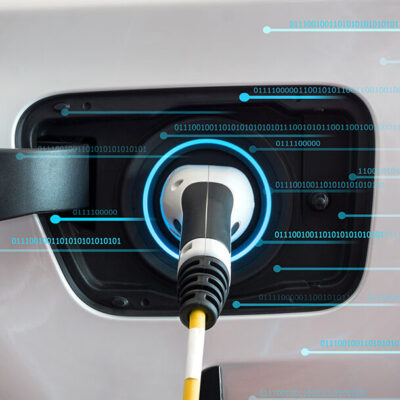
Widespread EV uptake depends on EV charging operating on high-availability networks with remote connectivity and internet access to:
- Process payments
- Perform maintenance
- Efficiently manage the electrical load
Integrating the right IoT connectivity solution can help OEMs manufacture secure and dependable EV charging stations. It can also enable CPOs to provide exceptional experiences for their customers.
About Us
We are a global leader in Internet of Things (IoT) enablement with an extensive portfolio of modules and global connectivity services. We empower millions of connected devices by delivering secure, end-to-end IoT solutions for the world’s largest brands.
With over 22 years of IoT innovation experience, we are trusted by thousands of direct and indirect customers worldwide across all industries. We enable them to connect and manage IoT at any scale.
Bring your EV charging solution to life with Telit Cinterion.
Key Takeaways
- EV charging solution providers must consider software and connectivity for networked or cloud-based communications in addition to selecting the best hardware for their applications.
- EV charging stations require robust, end-to-end security to ensure that highly sensitive customer data is protected, which is especially critical for payment processing and customer confidence.
- OEMs should consider hardware and connectivity requirements together for EV charging solutions. Bundling cellular modules and connectivity empowers them to reduce time to market and streamlines the certification process.
